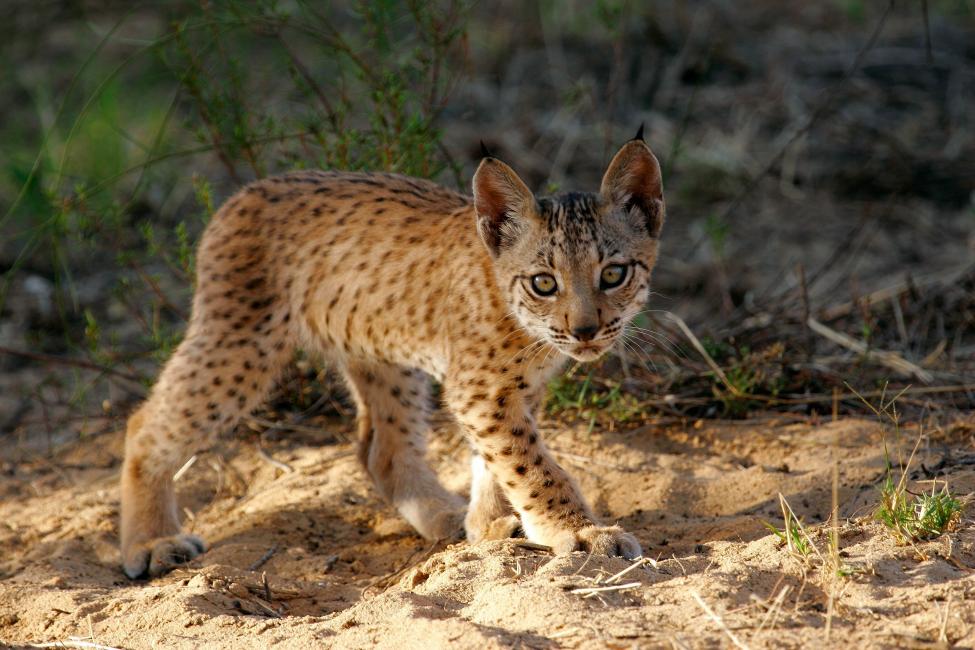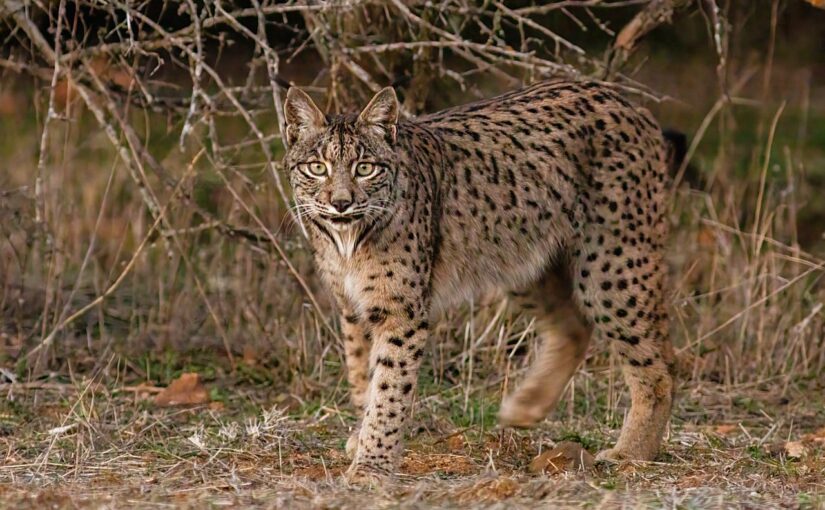Deep within the sun-soaked landscapes of the Iberian Peninsula walks a cat that was once on the very brink of extinction. The Iberian lynx, Lynx pardinus, often called the “panther lynx” for its striking black spots and tawny-yellow coat, is not only a symbol of wild Europe but also a beacon of hope for conservationists everywhere.
This rare feline was long thought to be a subspecies of the Eurasian lynx, but evidence now shows that it is a species in its own right. Thousands of years ago during the Pleistocene, both cats roamed across much of Central Europe. Over time, they evolved along separate paths, adapting to the unique climates and ecologies of their home ranges.
The Iberian lynx is unmistakably lynx in form, yet a careful eye can spot the differences. Slightly smaller than its Eurasian cousin, it measures between 85 and 110 centimeters from nose to rump, with a short thirteen centimeter tail and weighing in at about ten to thirteen kilograms. Its fur is graced with bold black spots that are more pronounced than in the Eurasian lynx, enhancing its natural camouflage among Mediterranean shrubs and grasses. The pointed face, muscular jaw, and elegant ear tufts complete its wild profile.
Unlike its northern cousin who prefers deep forests and thick undergrowth, the Iberian lynx is more versatile in its tastes. It makes use of sand dunes as well as traditional wooded environments, always seeking areas with a patchwork of grass, shrubs, and trees. This varied landscape is not simply for comfort but is essential for hunting, as it provides the right setting for stalking and ambushing prey.
At the heart of the Iberian lynx’s diet is the European rabbit. For centuries, rabbits have been its main food source, and the well-being of the lynx is intimately tied to the fortunes of these small mammals. The cat’s agility and keen senses allow it to single out, chase, and capture rabbits among dense grass and low bushes. When rabbits are scarce, it adds other small mammals and birds to the menu, but these cannot fully fill the gap left by declining rabbit populations.

The twentieth century brought a crisis not just for rabbits, but for the lynx itself. Rabbit populations plummeted due to disease (myxomatosis, later compounded by rabbit hemorrhagic disease) and overhunting by humans. As rabbits vanished from the landscape, Iberian lynx numbers followed suit. By the early years of the twenty-first century, the situation had grown dire, with only about one hundred individuals remaining in two small groups secluded in Andalusia.
What happened next reveals the power of coordinated conservation efforts. Beginning in 2002, Spanish authorities, conservation organizations, and local communities launched a suite of emergency actions. From stricter legal protections and habitat restoration to the breeding and release of captive-born animals, every tool was used to pull the species back from the edge. Rabbits were reintroduced and their habitats managed to support stable populations. Road underpasses and warning signs reduced collisions, and education programs began to change local attitudes toward this beleaguered feline.
The results have been nothing short of miraculous. From those slender beginnings, the population of the Iberian lynx grew steadily. By 2020, the number of wild individuals had rebounded to 855, a tenfold increase in less than two decades. Safe corridors now link some of the former isolated populations, and lynx have begun repopulating areas across southern Spain and even parts of Portugal. Each new litter born in the wild is a testament to what can be achieved when people choose to value and restore the natural treasures of their land.
Yet the story of the Iberian lynx is ongoing and its future far from secure. Continued vigilance is necessary against threats like habitat loss, declines in rabbit populations, and the dangers of road traffic. Genetic diversity remains a concern, and conservationists are working to ensure populations are large and healthy enough to avoid future bottlenecks.
For visitors lucky enough to explore the scrubby hills and rolling oak forests of Andalusia, the Iberian lynx remains a creature of dreams, graceful, wary, and supremely adapted to its sun-dappled domain. To see one in the wild is not just to find a rare animal, but to glimpse the possibility of renewal and hope.
The Iberian lynx stands today as a shining example that species once written off as lost can return. Its recovery has brought together governments, scientists, landowners, and local communities in a rare spirit of unity. In every paw print pressed into Spanish soil, there is a reminder that wild Europe is still alive, and that with commitment and patience, even the most endangered creatures can surprise us all.
In every sense, the Iberian lynx is more than just a beautiful cat. It is a success story, a lesson, and an invitation to protect the wild places and natural wonders that enrich our world.
Teaser image by Diego Delso.
If you find joy in these tales of twitching whiskers and gleaming eyes, consider helping keep Whiskerito.com alive and purring. Your donation supports thoughtful research, engaging content, and the warm, wonder-filled community that makes this space what it is.
